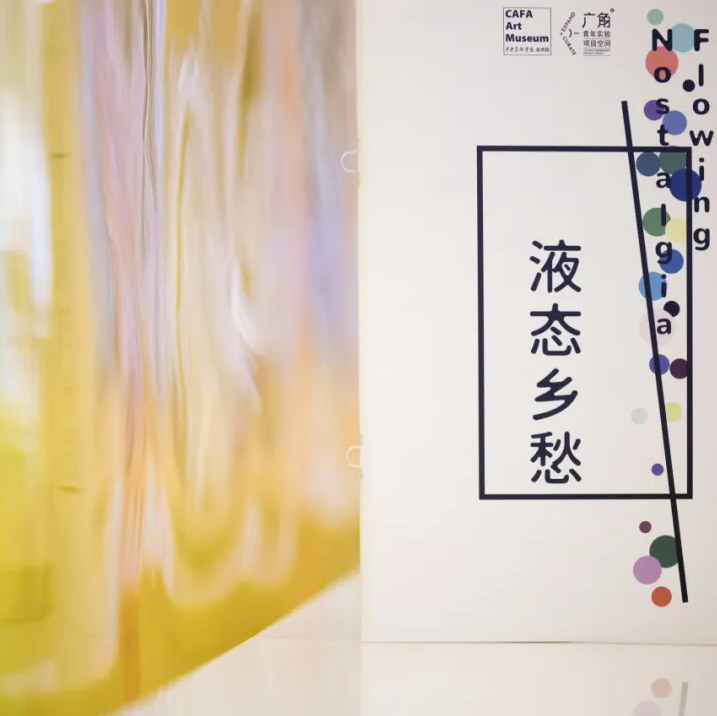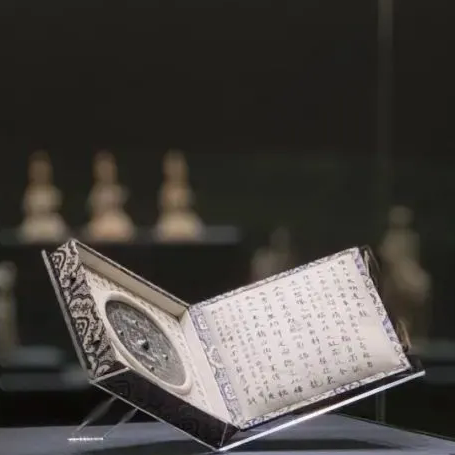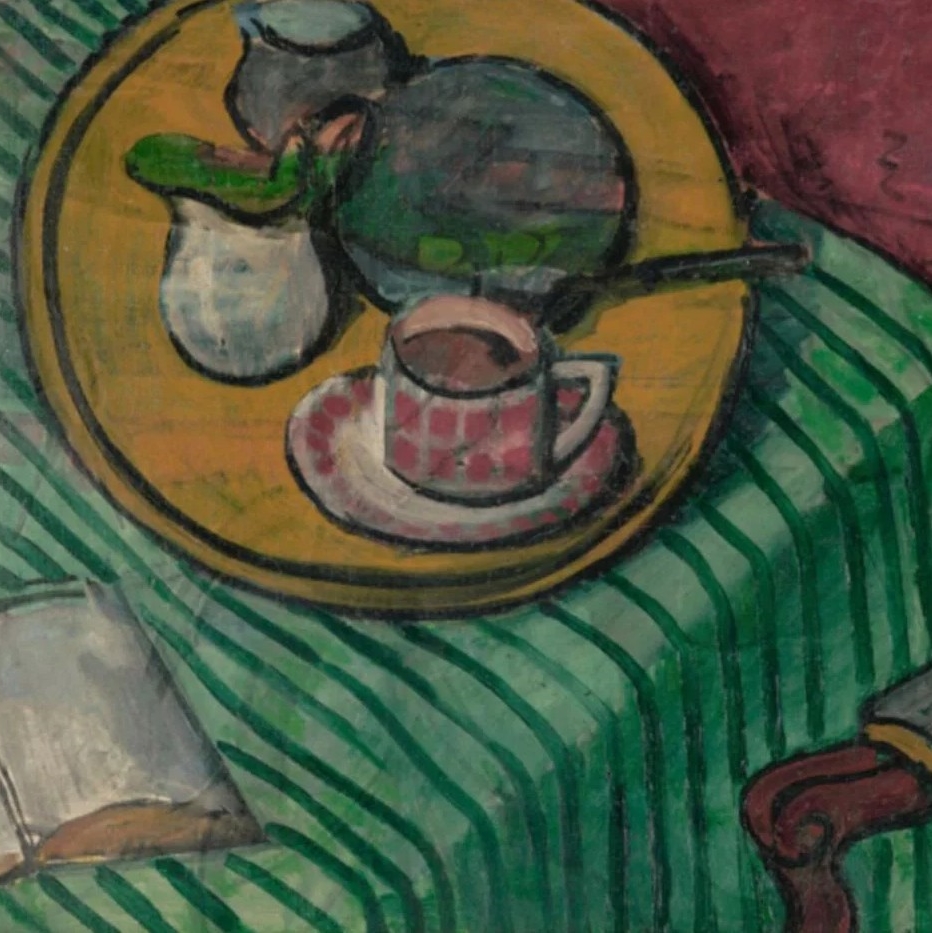Xu Bing’s grand solo exhibition “Xu Bing: Art Satellite—The First Animated Film Shot in Space” was unveiled on April 17th at the Church of Santa Veneranda in Venice. The artist gave a talk at the Cotonificio Auditorium, Università luav di Venezia on the same day.
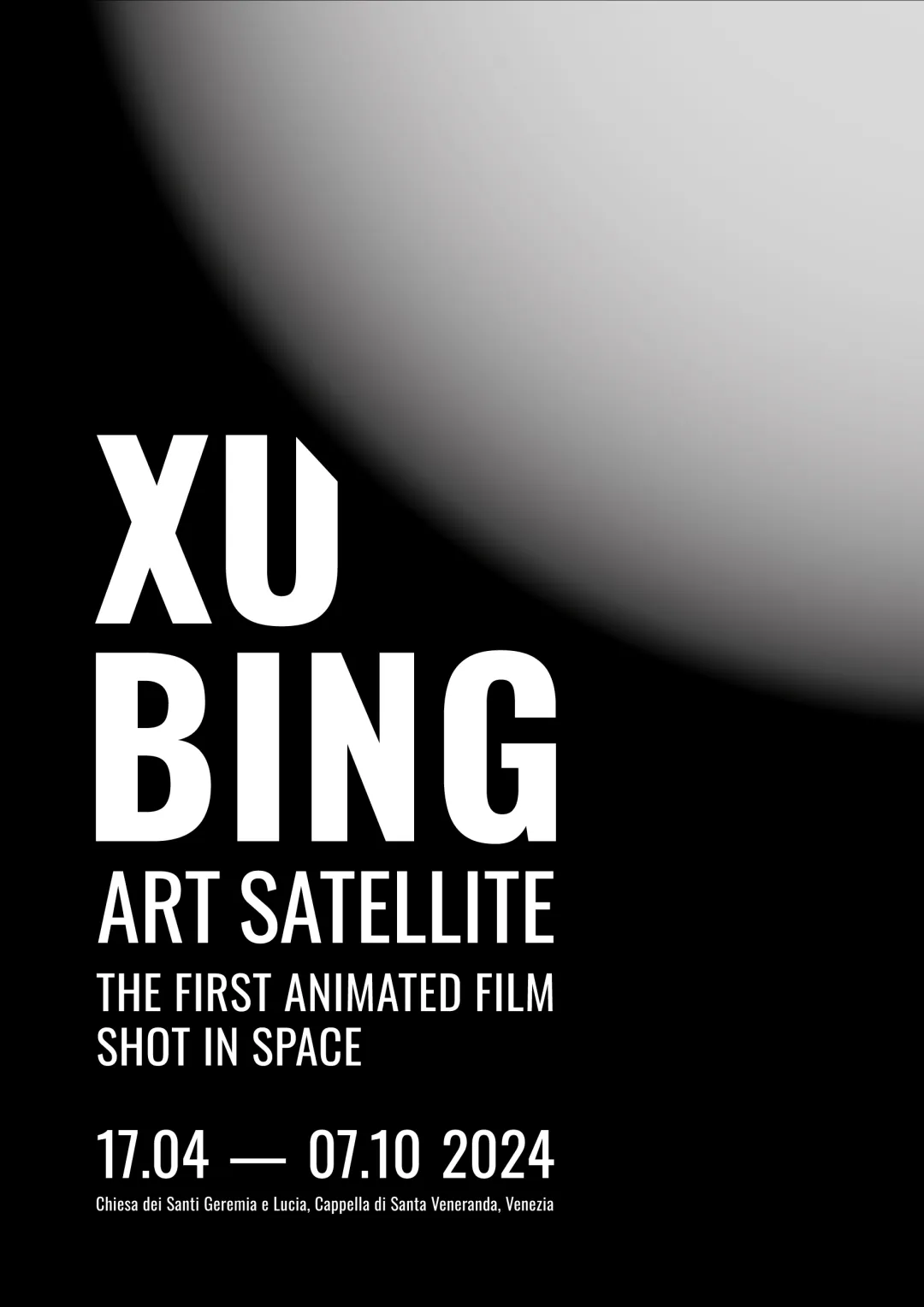 Poster of “Xu Bing: Art Satellite—The First Animated Film Shot in Space”
Poster of “Xu Bing: Art Satellite—The First Animated Film Shot in Space”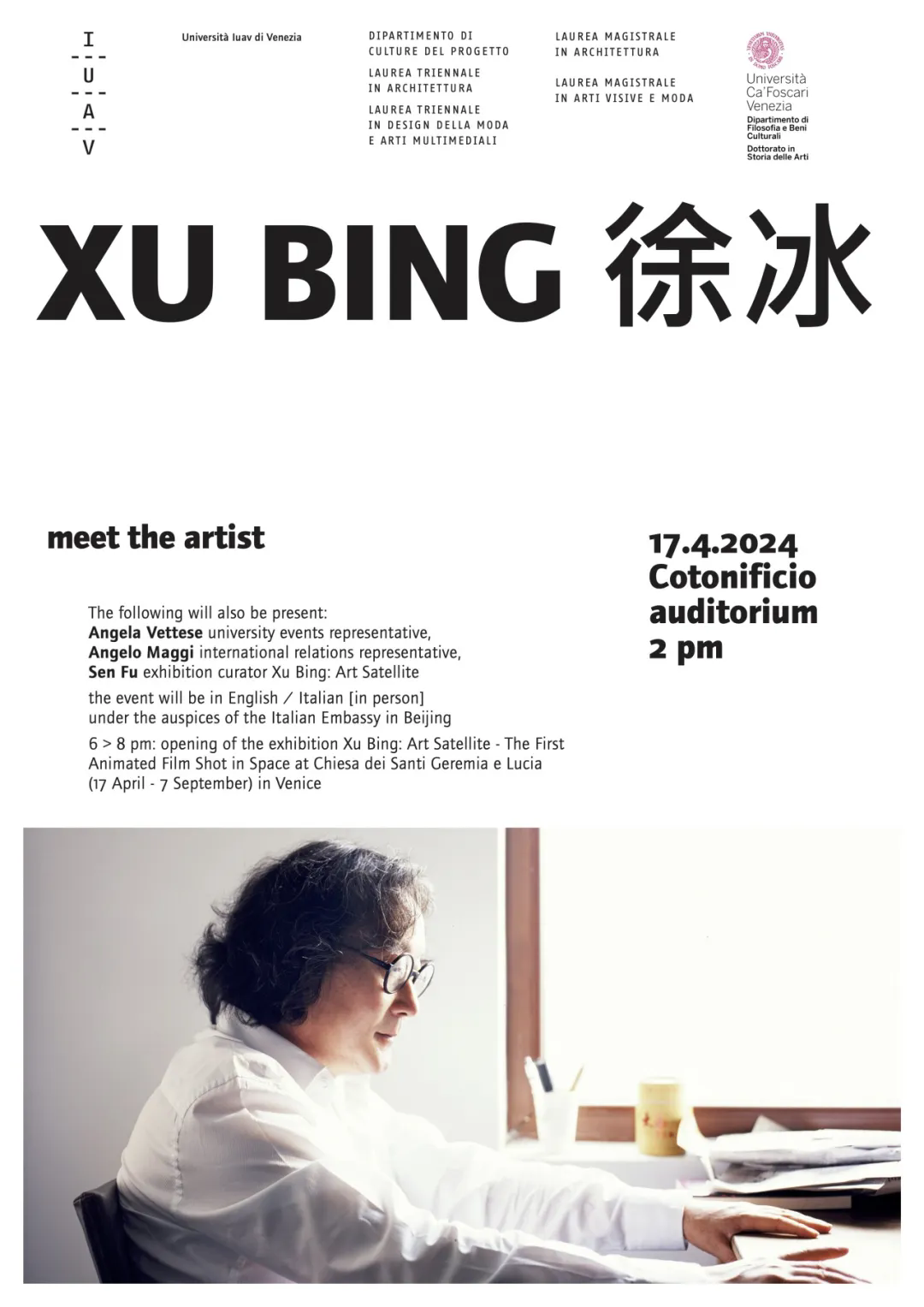 Poster of the Seminar
Poster of the Seminar
The works in the exhibition utilize space technology to follow and respond to, from a broader viewpoint, a wish that has been carried forward from ancient times to the present day by the church. The wish, engraved on the outside of the church, is, “All’ Italia al mondo implori luce pace” (Bringing light and peace to Italy and to the whole world).
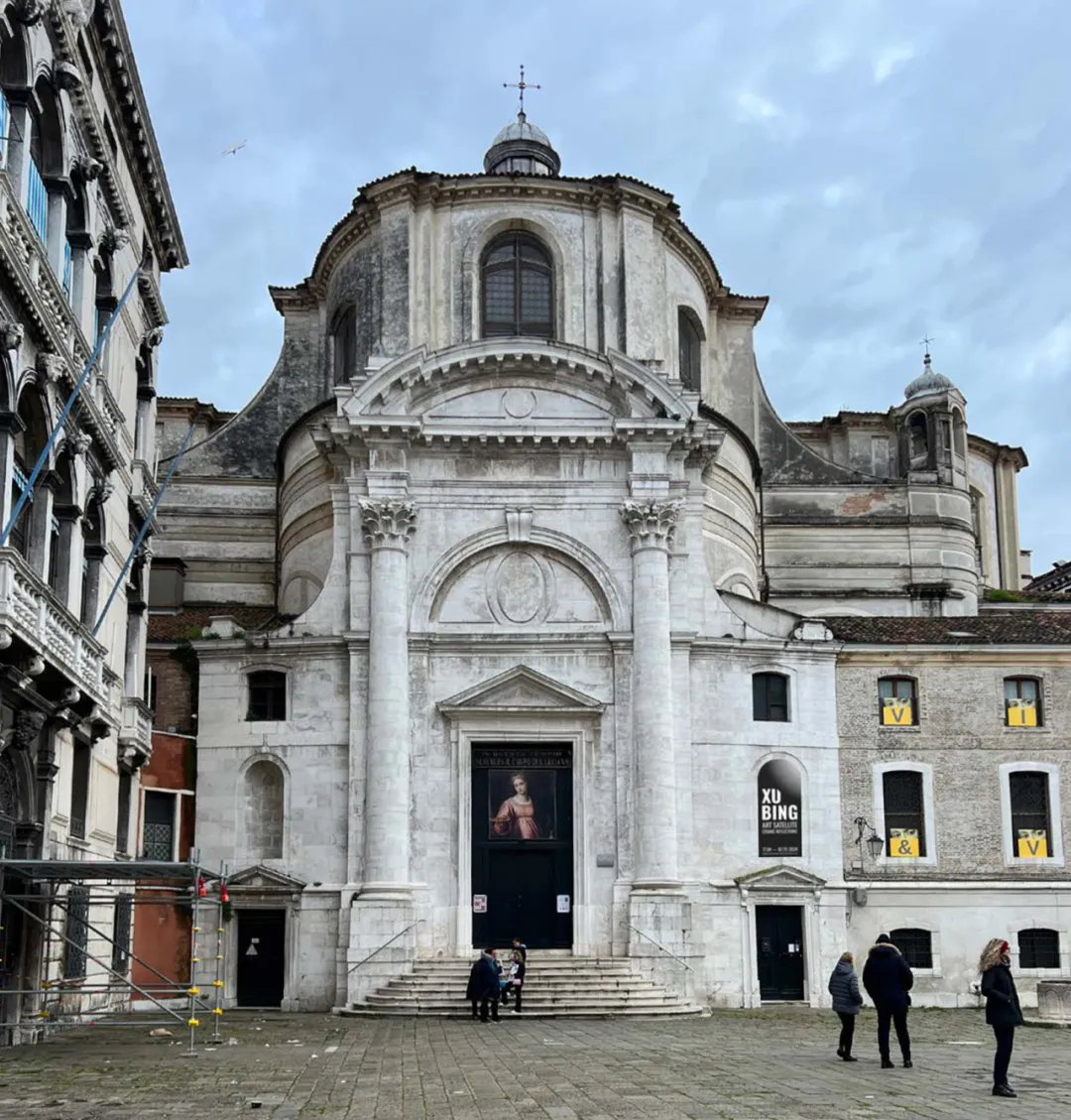 The Church of Santa Veneranda
The Church of Santa Veneranda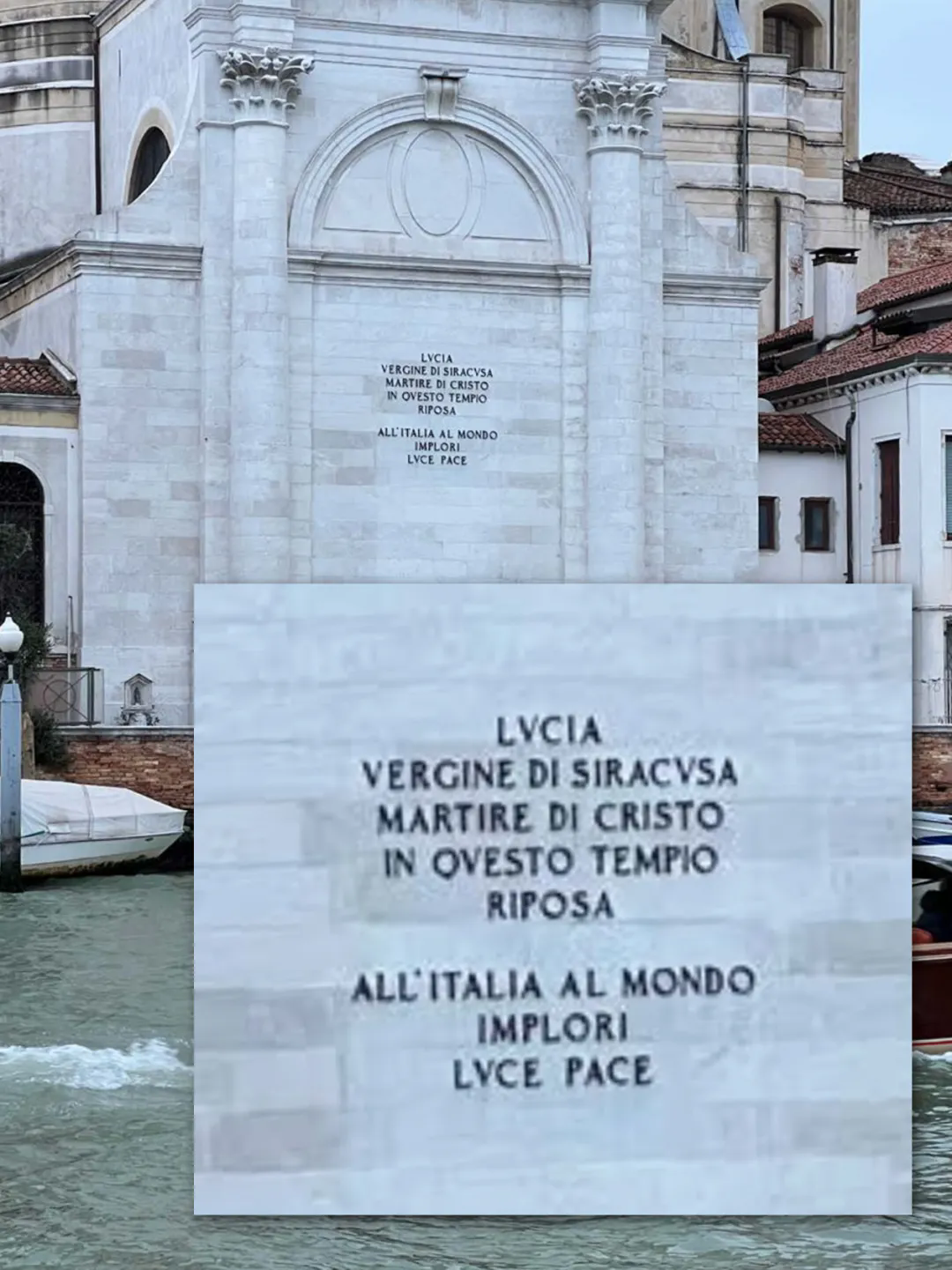 All’ Italia al mondo implori luce pace
All’ Italia al mondo implori luce pace
The exhibition is highlighted by the world’s first freeze frame animation “Lake on a Satellite” filmed in outer space on the rooftop of the church. This 3-minute-and-7-second short film was shot using a retired orbiting satellite, Ladybug-1.

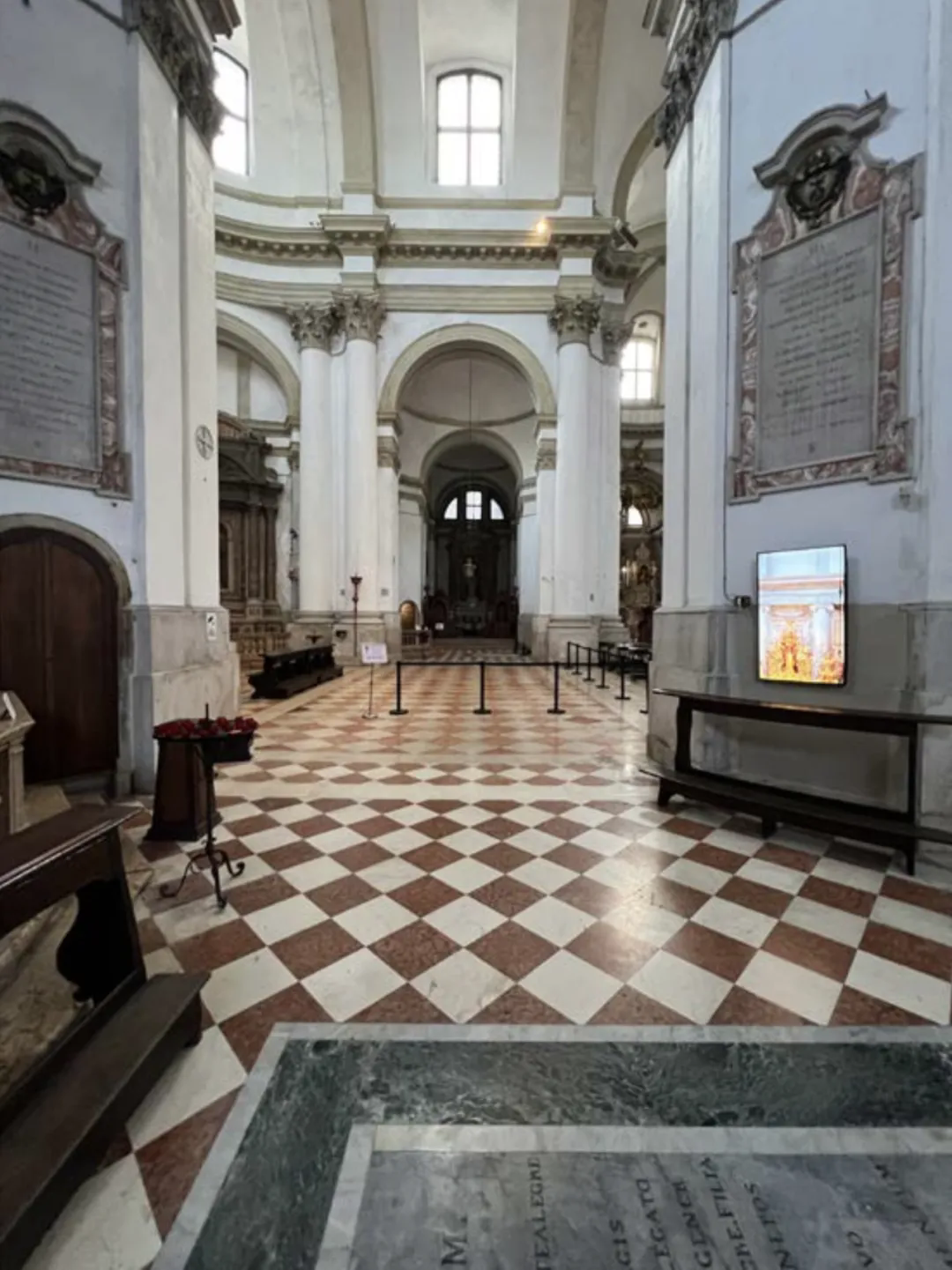 The Interior of the Church of Santa Veneranda
The Interior of the Church of Santa Veneranda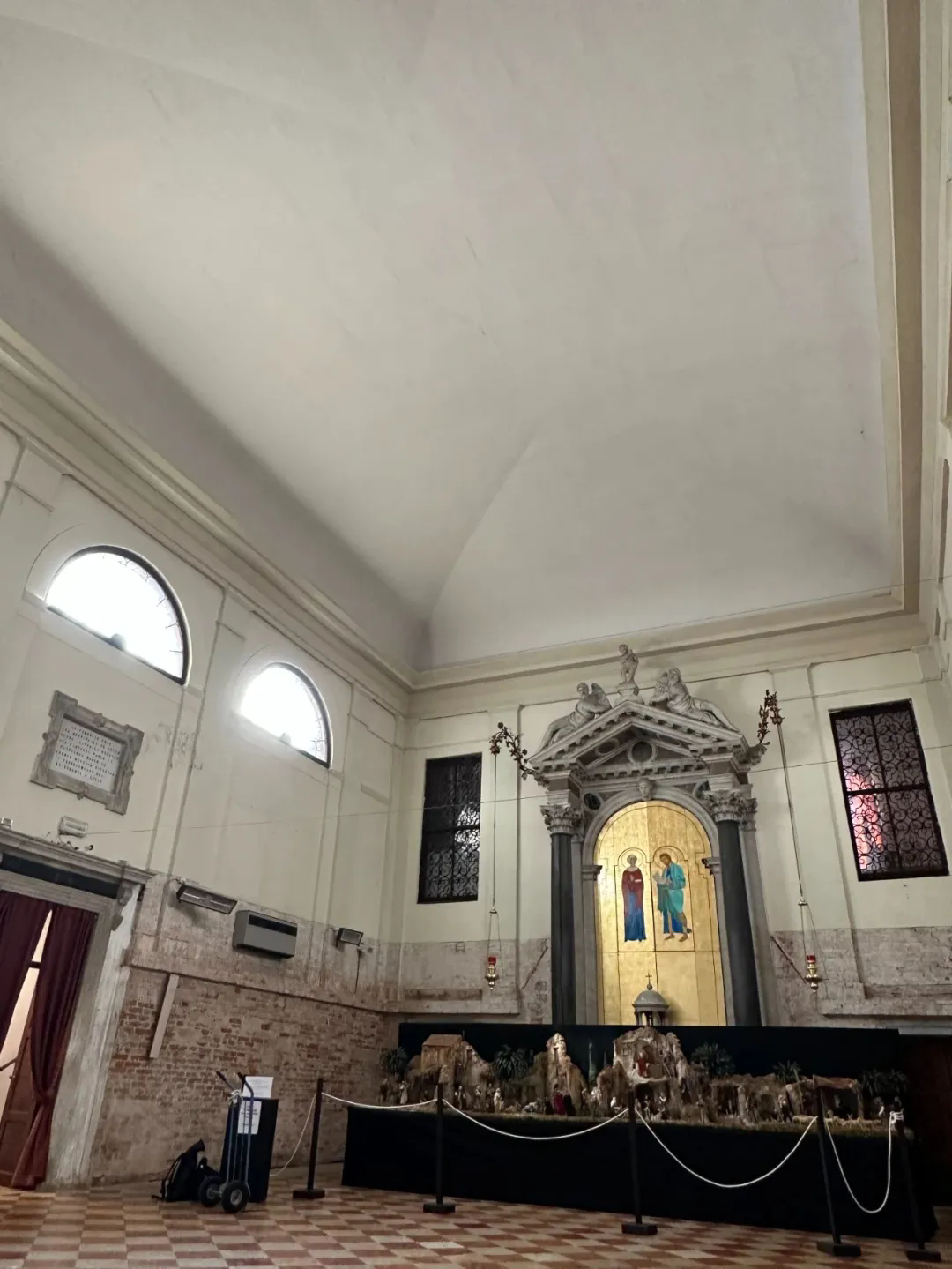 The Interior of the Church of Santa Veneranda for the Exhibition
The Interior of the Church of Santa Veneranda for the Exhibition Bishop Don Caputo, architect Andrea Nalesso and artist Xu Bing visited the space for the exhibition
Bishop Don Caputo, architect Andrea Nalesso and artist Xu Bing visited the space for the exhibition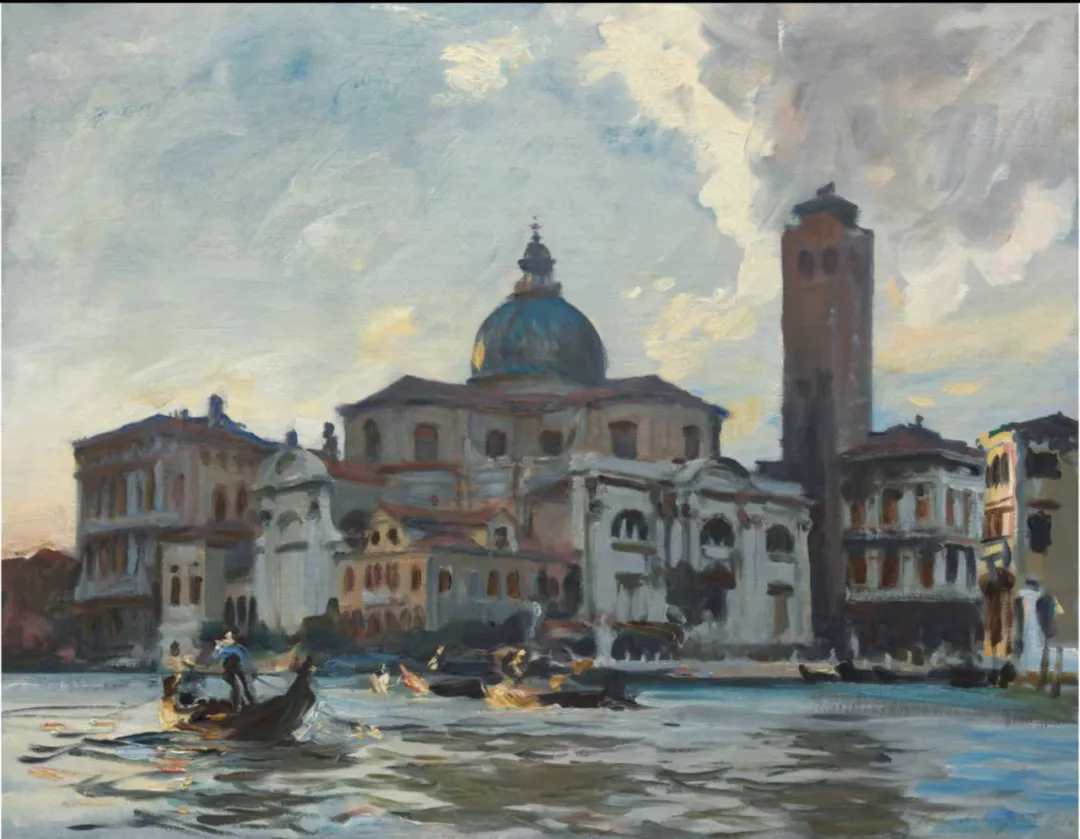 John Singer Sargent painted the Church of Santa Veneranda in 1913
John Singer Sargent painted the Church of Santa Veneranda in 1913 “Lake on a Satellite” is presented at the zenith of the Church of Santa Veneranda.
“Lake on a Satellite” is presented at the zenith of the Church of Santa Veneranda.
By utilizing ground-transmitted images and a self-directed satellite camera, Xu Bing integrates man-made pictures with those captured from an orbit, creating a captivating animation that blurs the boundaries between Earth and space. Imagine the “standard person” traversing outer space, carrying a bundle in tow while words spill out of their baggage. As the satellite orbits around the earth 15 times each day, the language depicted in the animated spills changes in sychronization with the satellite’s position above certain geographical locations.
 As the satellite orbits around the earth 15 times each day, the language depicted in the animated spills changes.
As the satellite orbits around the earth 15 times each day, the language depicted in the animated spills changes.
The second part of the exhibition introduces the origin of Xu’s ideas on space art and his creative practices, as well as the ongoing international “Xu Bing Art Satellite Creative Residency Project.”
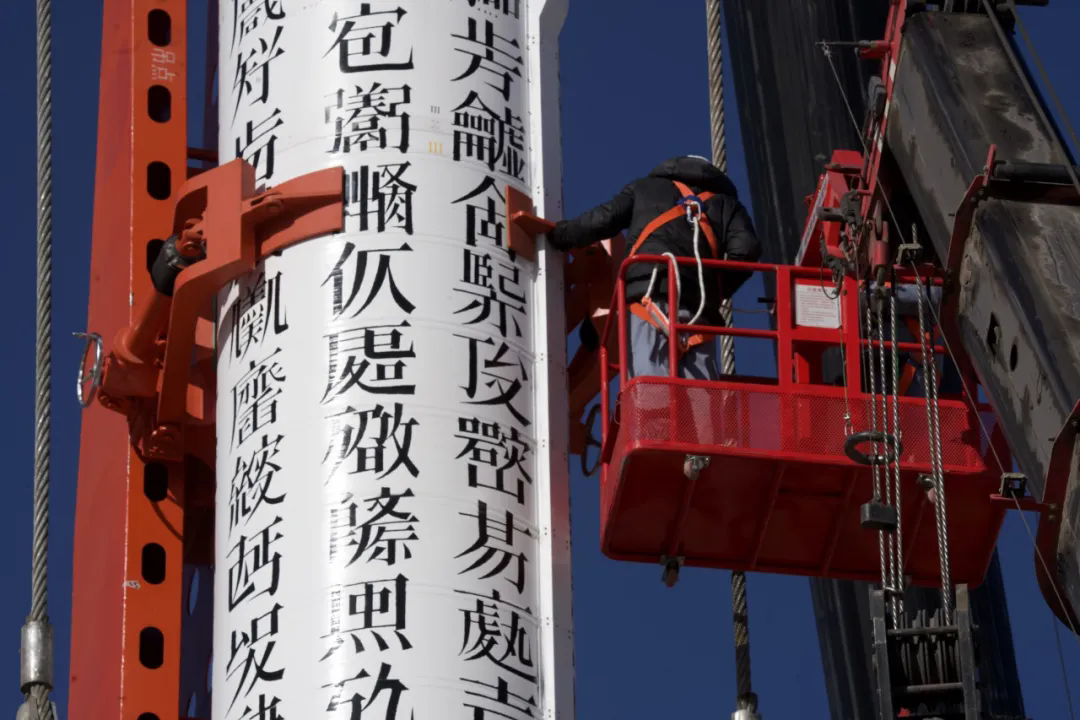

 Xu Bing Tianshu Rocket
Xu Bing Tianshu Rocket
In 2019, Xu Bing got the opportunity to create art with a rocket. Launched by Xu Bing and i-Space, Xu Bing Tianshu Rocket is an invaluable contribution to the evolving realm of space art. This unprecedented “art rocket” pays homage to the achievements of Chinese astronauts and embodies the innovative spirit that resonates in Xu Bing’s works. Painted with invented characters found in the archetypal Book from the Sky (1988), the rocket acts as a vessel that continues to question the arbitrary nature of language and its limitations.
“After completing the propulsion task, the sub-stage arrow will separate from the load compartment and return to the ground. These ‘pseudo-characters’ [represent] a unique [artistic expression that reconstructs] natural forces such as fire [propulsion], atmospheric friction, and [the descent of the rocket]. [They] challenge the boundaries of human ability and behavior, [while also creating] art."—Xu Bing, April 2021
The “art rocket” was launched into space from Jiuquan, Northwest China on February 1, 2021, venturing into territories of space where humanity’s dominance is absent. Xu Bing has emphasized that the artistic philosophy of Qi Baishi’s work, which revolves around acknowledging the importance of providing space for nature and understanding its role, is intrinsic to the launching of this “art rocket.” It is worth noting that the functioning of the rocket itself relies on the interaction between the rocket and the Earth’s atmosphere. As such, the “art rocket” becomes a manifestation of this philosophy. Without atmospheric response, Nature’s intervention, the first-stage and second-stage rockets would not have ignited before impact.
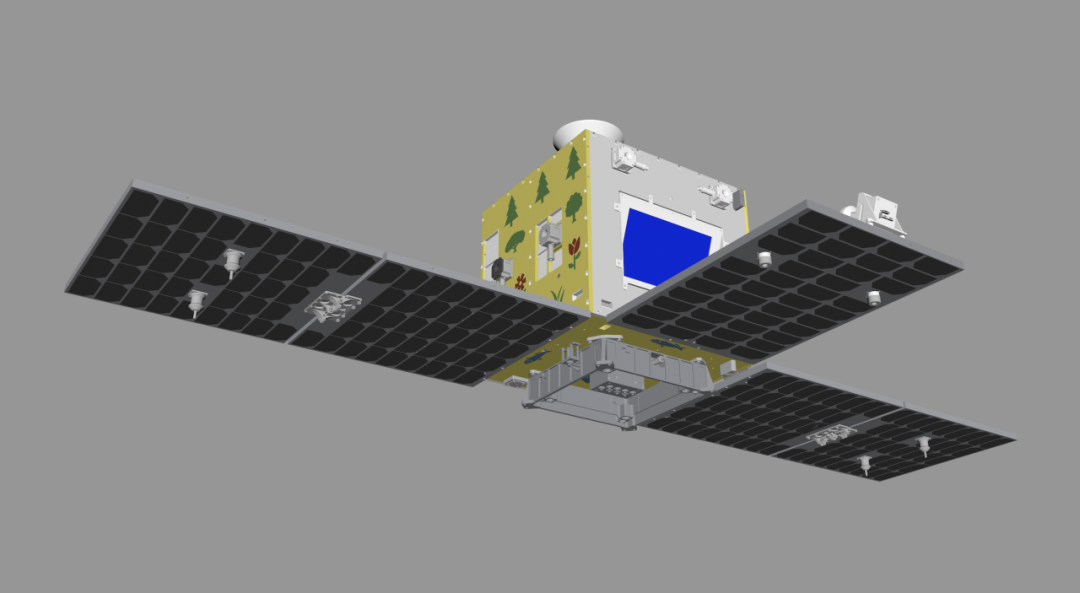 Model Diagram of the "SCA-1" Art Satellite, 2023, © Xu Bing Studio.
Model Diagram of the "SCA-1" Art Satellite, 2023, © Xu Bing Studio.
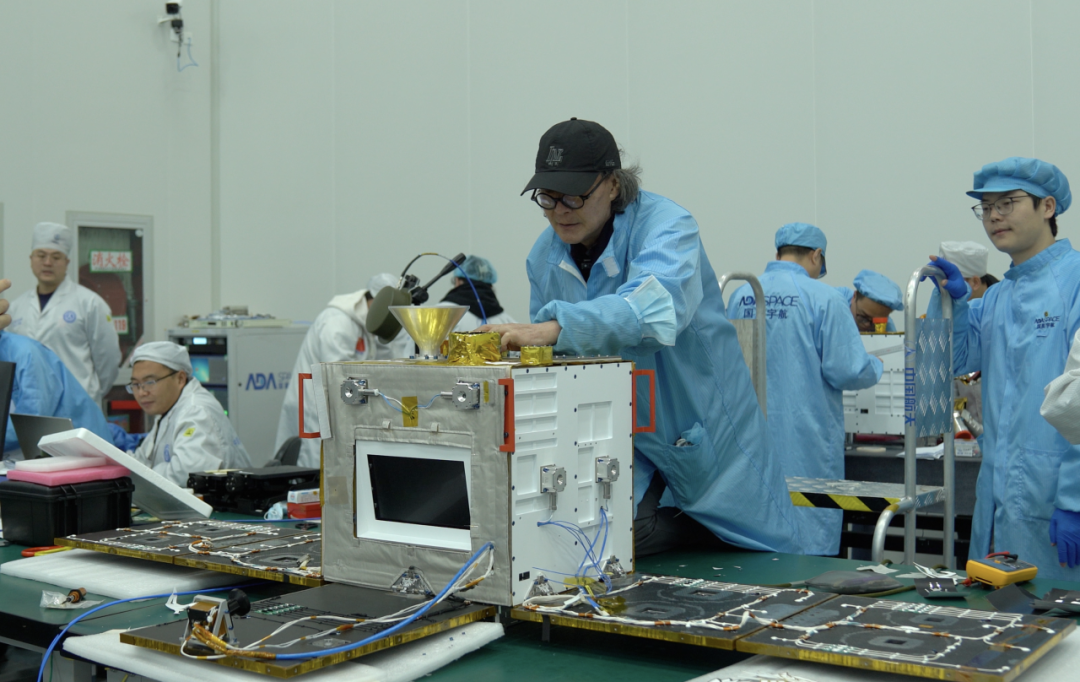 "SCA-1" Art Satellite at Work, 2023, © Xu Bing Studio.
"SCA-1" Art Satellite at Work, 2023, © Xu Bing Studio. Real Shot of the "SCA-1" Art Satellite, 2023, © Xu Bing Studio.
Real Shot of the "SCA-1" Art Satellite, 2023, © Xu Bing Studio.
Nowadays, the control of space technology has begun to be transferred from the government to the private sector, which provides new possibilities for space art creation. On February 3, 2024, the art satellite SCA-1, led by Xu Bing Studio in collaboration with Beijing Wanhu Chuangshi Cultural Media Co., Ltd, was successfully launched and it will remain in orbit for three years. As a result, the “Xu Bing Art Satellite Creative Residency Project” was launched to invite (and solicit) artists and professionals with a cosmic perspective and outstanding thinking abilities, providing them with an artistic creation platform beyond the Karman Line. Artists from all over the world, including people from all fields and the general public, share the right to use this satellite. In the special environment of outer space, in a shared legal space that transcends national boundaries, they are encouraged to create some new art.
When the exhibition is held in Venice, the satellite will interact with the Church of Santa Veneranda between the Earth and space.
Courtesy of Xu Bing Studio, edited by CAFA ART INFO.


